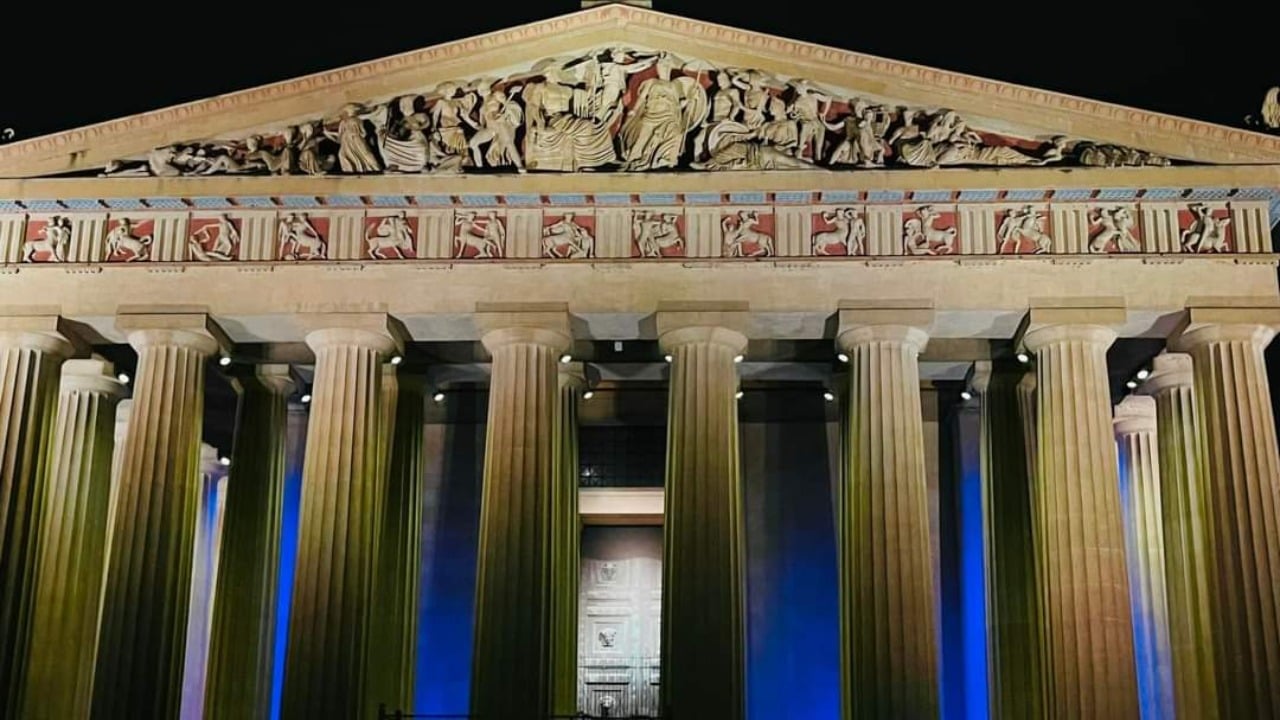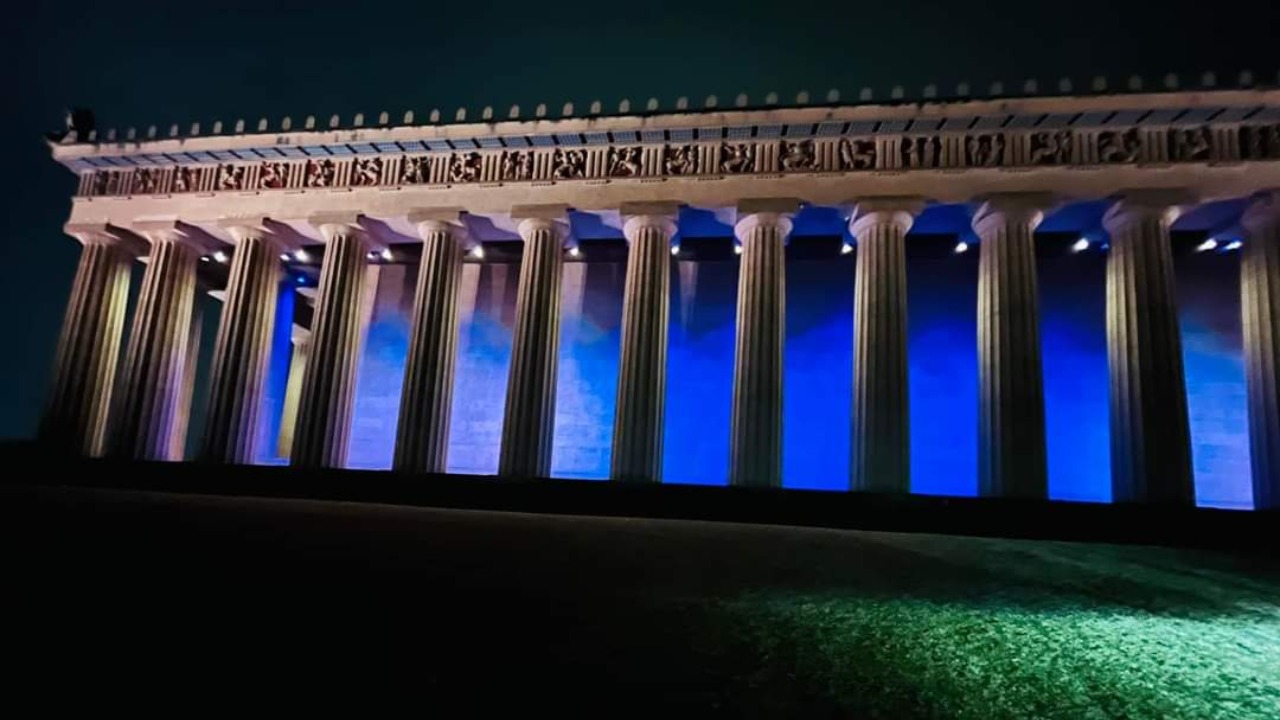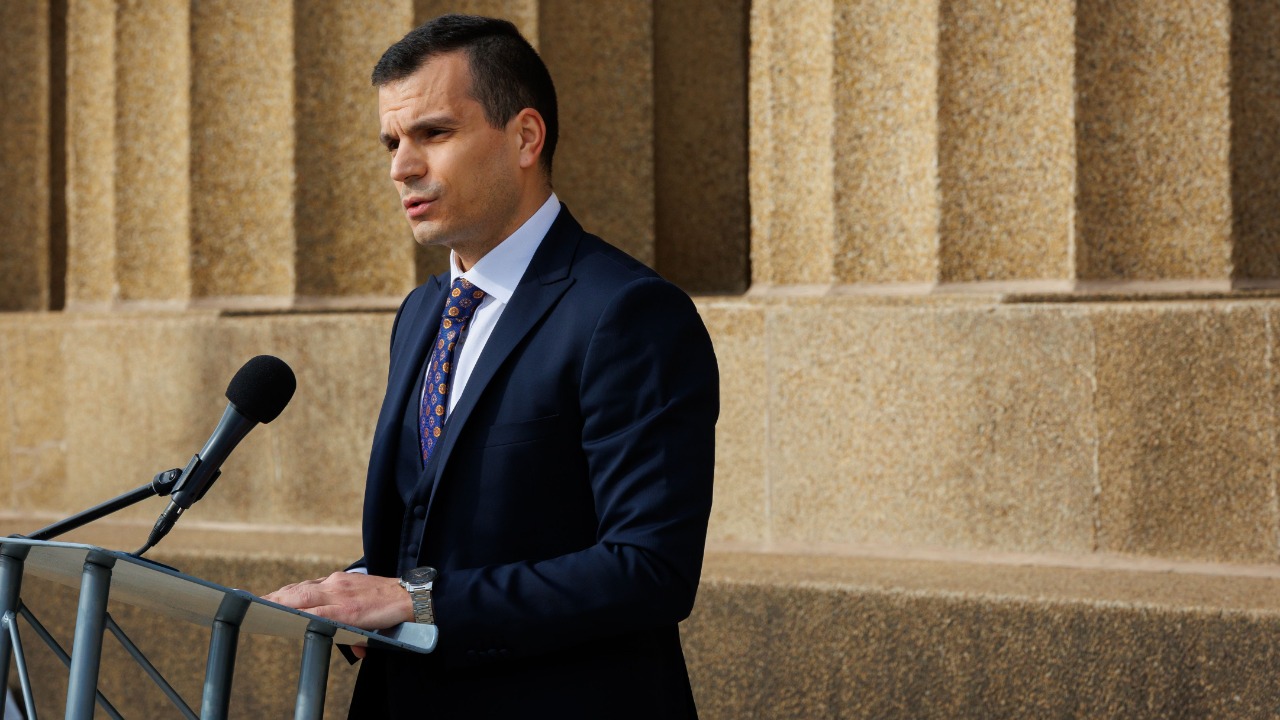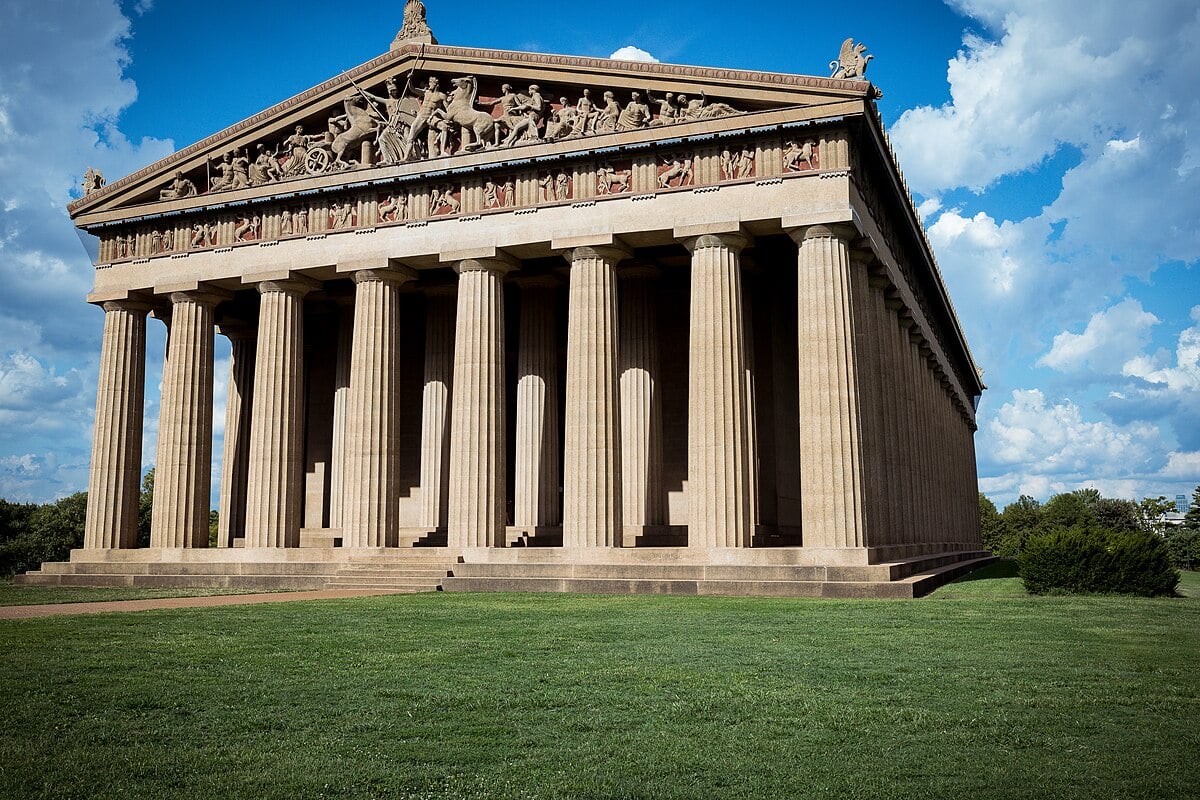
In its fourth annual celebration of Greek Independence Day in Nashville, Tennessee, the US branch of the Hellenic Institute of Cultural Diplomacy and President DeeGee Lester welcomed Greek Consul-Atlanta Theodoros Dimopoulos in a ceremony at the Parthenon. The iconic structure was illuminated in blue, one of the two colors of the Greek flag, as a tribute to commemorate Greek Independence Day.
Celebrating Greek Independence Day at the Nashville Parthenon
Marking a dual celebration, Ms. Lester was joined by speakers in “honoring visionaries – those of ancient Greece who through their curiosity and genius inspired civilization; those Greeks who boldly re-dedicated themselves to the cause of liberty from the Ottoman Empire on this date (March 25) in 1821; and Nashville’s Dr Philip Lindsley whose 1824 vision for Nashville as a ‘New Athens’ created a legacy for the pursuit of excellency in culture and education.”
Now in it’s fourth year, Nashville is home to the US branch of the multi-nation HICD. Founded in Athens, Greece by President Peter Kapsaskis on March 25th, 2017, the organization says it is dedicated to building, through active and robust events and programming, bridges of mutual friendship and sharing between Greece and HICD’s growing member nations.

Honoring Greek Independence, and on behalf of Mayor Freddie O’Connell and the city of Nashville, a mayoral proclamation was presented to Greek Consul Theodoros Dimopoulos by Metro Parks Director Monique Odom. In acceptance on behalf of Greece, Consul Dimopoulos offered his own message of friendship and understanding, honoring the tradition of Philhellenes who supported the cause of Greek Independence, and the unity of the two nations through generations.
The event also recognized the reputation of Nashville as the ‘Athens of the South’ through the Bicentennial presentation of the Hon. John Cooper (former Mayor of Nashville and a descendant of Philip Lindsley).

1824 marked the arrival of classicist and college president Dr Philip Lindsley in Nashville and his stated vision for the city: “To create on the frontier a new Athens dedicated to education and the arts.”
Throughout the 19th century that vision for the city evolved from the Athens of the West into recognition as the “Athens of the South,” as home to world class universities and, by the 1897 Tennessee Centennial Exposition, as home to the Parthenon which has served for generations as the cultural anchor of the city.
The day’s Greek Independence Day events closed with the fourth annual illumination in Greek blue and white lighting of three iconic Nashville sites: the Parthenon, the Greek Revival Tennessee State Capitol, and the Metro Courthouse.
This Parthenon in Nashville is a full-scale, meticulously crafted replica of one of history’s most iconic Greek structures. The Nashville Parthenon lies at the heart of the city’s centennial park. It is a true testament to the city’s rich cultural heritage and the real proof of its nickname, “the Athens of the South.”
Nashville Parthenon
Originally constructed for the Tennessee Centennial Exposition in 1897, the replica of the Parthenon bridges the ancient with the modern world. However, it is more than that. It is an active link that connects the two sides of the Atlantic, attesting the friendship of the Americans and Greeks to this day. This is the reason why it is worth exploring the history, architectural elements, and cultural impact of this US landmark that brings a glimpse of Greece to the heart of Tennessee.

The monument was originally constructed as a temporary feature for the Tennessee Centennial Exposition. It was the time when Tennessee was celebrating the 100th anniversary of its entry to the Union. The purpose of this replica was to embody Nashville’s cultural identity as the “Athens of the South.”
This was a clear nod to the city’s commitment and dedication to education, art, and philosophy. The Parthenon of Nashville was initially built from plaster, wood, and brick. This Nashville replica, of course, comes as a stark contrast to the original Parthenon that dominates the Greek skyline in Athens.
The ancient Greeks built the original Parthenon at the top of the Acropolis using the finest Greek marble, and it has endured centuries of wear. Captivating the public’s imagination and soon becoming an iconic landmark of the city, it was decided that the structure would be reconstructed in concrete in Nashville, as so happened in the 1920s. This ensured that it would stay there as a monument to Classical beauty and an educational tool for future generations.
See all the latest news from Greece and the world at Greekreporter.com. Contact our newsroom to report an update or send your story, photos and videos. Follow GR on Google News and subscribe here to our daily email!



